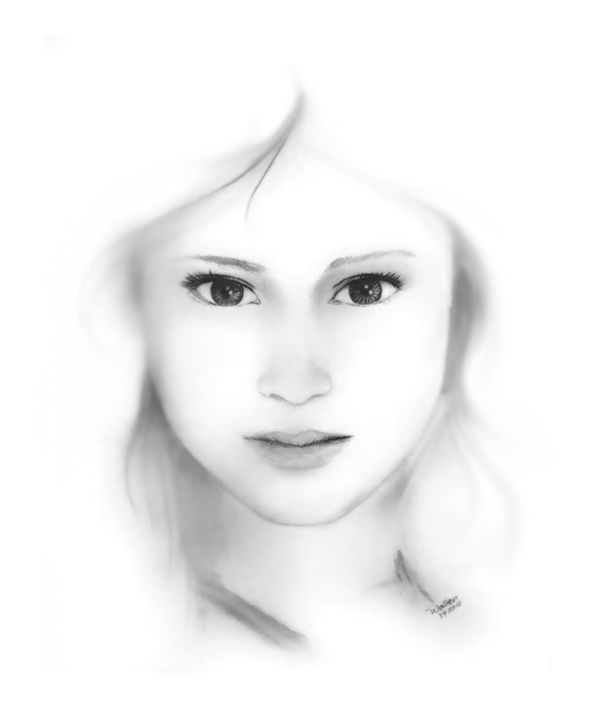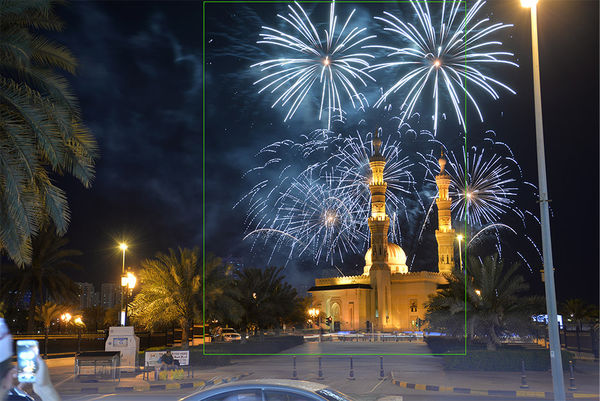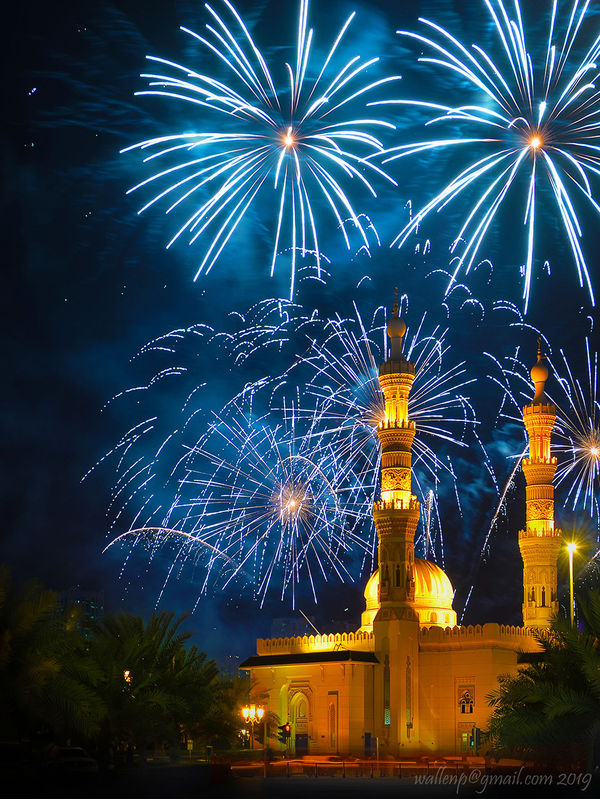Posts for: Wallen
Mar 27, 2019 23:49:38 #
traderjohn wrote:
You would be correct. Photography is just that; photography.
When you use something that is made of plastic, metal and an electronic component to take a picture. Then transfer that picture to a laptop or computer from there you use a variety of software programs to enhance or embellish your picture you cannot call it art. It is a picture. Software programs have made the picture look better. The genius lies in the software.
When you use something that is made of plastic, metal and an electronic component to take a picture. Then transfer that picture to a laptop or computer from there you use a variety of software programs to enhance or embellish your picture you cannot call it art. It is a picture. Software programs have made the picture look better. The genius lies in the software.
If someone is just bumbling with the plastic and plays dice with the software you are absolutely right.
Even then, once in a while someone gets lucky.
Otherwise...
Art is the pinnacle of completion (When nothing more can be added or taken away to improve or make something better) where everything works together as a whole, giving itself a life of its own, capable of touching lives and invoking deep emotion.
Hence art can be anything as long as it has that quality. A song, Painting even software manipulated photographs.
For it is not the software that makes it art but the "deliberate" effort of the person who used the software as his/her brush, paint and canvass.
Sadly, now a days its meaning and essence has been tainted with technology, money and uncritical expectations that even mundane things have been called art.
Mar 26, 2019 06:42:16 #
Though many advocate SOOC (Straight out of camera) photography, we must not set aside the improvements that editing can achieve.
But such thinking should not make us sloppy, rather to treat that as another tool to enable us present, what we visualize within the clutter of of the moment.
Because that is the reality of life. There are times that we are limited by our equipment, time and other things that we can not control. So within our capacity, let us try our best to have it as close as (SOOC) as possible and take or add to that as little as we can to make things better.
First photo is a copy the actual capture and the second one is the cropped and edited version.
But such thinking should not make us sloppy, rather to treat that as another tool to enable us present, what we visualize within the clutter of of the moment.
Because that is the reality of life. There are times that we are limited by our equipment, time and other things that we can not control. So within our capacity, let us try our best to have it as close as (SOOC) as possible and take or add to that as little as we can to make things better.
First photo is a copy the actual capture and the second one is the cropped and edited version.
Mar 21, 2019 01:40:32 #
Gene51 wrote:
It's important to note that not all images contain... (show quote)
Thanks Gene51.
Best post on the subject so far.
How you posted is precisely how to do things if one has the time.
In a hurry, a plain jane 3 or 5 bracket 14bit RAW 1 stop interval is a photographers best bet.
Shooting sports or other fast changing subject/situation is another matter. For that, one needs to be better at judging a single exposure.
Mar 21, 2019 01:07:44 #
DaveyDitzer wrote:
Can anyone offer a short explanation why the D7200 is offered with a 24mp sensor and the "advanced" , top-of-the-line D500 with a ~21mp sensor?
Shortest answer: Physics & Money.
Long answer:
First and foremost, they do not want to make the low cost models have too much capabilities that people will no longer want the high end (stupidly) priced ones. They just try to maintain enough advantage over the competitors who are playing the same game. Inevitably, they killed the models after the 7200 as it will become direct competitors of their own products. The D500 should be the D7300 but doing that would prevent them from bumping up the price.
For the same sensor area, high MP means smaller pixel size. They have better resolution provide they are matched with a capable lens. They also produce more bits to process. More bits means low FPS and buffer. Giving them high performance computer will not really increase price too much but will pull down the buyers of higher end models.
Since very few consumer of these low priced high MP cameras buy the appropriate lenses, practically speaking, No one fully benefited from it.
Going for the smaller MP means a bigger pixel size. These have better low light performance and less bits to process to get more FPS (Frames per second) even if there is no change in the cameras electronics. Battery performance may also improve with less computation to do. Consumers do not lose perceived resolution (explained above) so it will look like everything has been improved.
Slap a few more direct control buttons, the professional profile body and boom! we now have a better product than the last.
I hope you find this with a lot of sarcasm :-)
Mar 21, 2019 00:08:52 #
A simple analogy of computer parts.
The CPU is the main worker in a computer system, think of it as a person. Better cpu are faster workers. faster workers can manipulate things or gets things done faster.
The hard Disk (HDD) is your storage, like a big cabinet. Everything that the worker needs is stored there.
An SSD is like the cabinet too, only it has bigger doors so the worker can bring things out or in faster
The RAM or memory (DDR4 etc.) is the working table. The bigger the ram the more things can be manipulated on it at the same time. Faster rams are like tables that are closer to the cabinet, so it is easier to bring things out of the cabinet to the table to be manipulated or back into it.
Video cards are like specialist workers. In a group, it is like the spokesperson. He is best at showing others what is happening within the system. In the case of computers, its main purpose it to compute and output the video. They are actually like another computer with its own cpu and memory modules.
Hence, the best computer is when there is no bottle neck in the system. It would be bad to have a very fast CPU if the ram is small. Likewise if the CPU is slow, no amount of RAM would make things faster.
There are other tidbits of course, like Linux is faster but use less resources than Windows etc. But the above generally explains most of it.
The CPU is the main worker in a computer system, think of it as a person. Better cpu are faster workers. faster workers can manipulate things or gets things done faster.
The hard Disk (HDD) is your storage, like a big cabinet. Everything that the worker needs is stored there.
An SSD is like the cabinet too, only it has bigger doors so the worker can bring things out or in faster
The RAM or memory (DDR4 etc.) is the working table. The bigger the ram the more things can be manipulated on it at the same time. Faster rams are like tables that are closer to the cabinet, so it is easier to bring things out of the cabinet to the table to be manipulated or back into it.
Video cards are like specialist workers. In a group, it is like the spokesperson. He is best at showing others what is happening within the system. In the case of computers, its main purpose it to compute and output the video. They are actually like another computer with its own cpu and memory modules.
Hence, the best computer is when there is no bottle neck in the system. It would be bad to have a very fast CPU if the ram is small. Likewise if the CPU is slow, no amount of RAM would make things faster.
There are other tidbits of course, like Linux is faster but use less resources than Windows etc. But the above generally explains most of it.
Mar 18, 2019 01:23:53 #
In layman's language & technology level aside, why would a D500 ISO12800 looks better than a D7000 ISO 12800? Because they are are not following a standard.
Something like this:
D500 ISO 1600 = D7000 ISO 3200
D500 ISO 3200 = D7000 ISO 6400
D500 ISO 6400 = D7000 ISO 12800
D500 ISO 12800 = D7000 ISO Hi
D500 ISO 25600 = (nil)
D500 ISO 51200 = (nil)
If given an actual working ISO, it will be something like this:
D500 ISO 50(native) = D7000 ISO Low
D500 ISO 100 = D7000 ISO 100(native)
D500 ISO 1600 = D7000 ISO 1600
D500 ISO 3200 = D7000 ISO 3200 (limit)
D500 ISO 6400 = D7000 ISO 6400(boosted)
D500 ISO 12800(limit) = D7000 ISO 12800(boosted)
D500 ISO 25600(boosted)= D7000 ISO Hi (max boost)
D500 ISO 51200(boosted)= D7000 (nil)
If it is standard then we can directly compare the ISO capability of the camera.
Something like this:
D500 ISO 1600 = D7000 ISO 3200
D500 ISO 3200 = D7000 ISO 6400
D500 ISO 6400 = D7000 ISO 12800
D500 ISO 12800 = D7000 ISO Hi
D500 ISO 25600 = (nil)
D500 ISO 51200 = (nil)
If given an actual working ISO, it will be something like this:
D500 ISO 50(native) = D7000 ISO Low
D500 ISO 100 = D7000 ISO 100(native)
D500 ISO 1600 = D7000 ISO 1600
D500 ISO 3200 = D7000 ISO 3200 (limit)
D500 ISO 6400 = D7000 ISO 6400(boosted)
D500 ISO 12800(limit) = D7000 ISO 12800(boosted)
D500 ISO 25600(boosted)= D7000 ISO Hi (max boost)
D500 ISO 51200(boosted)= D7000 (nil)
If it is standard then we can directly compare the ISO capability of the camera.
Mar 18, 2019 00:47:27 #
Tom Daniels wrote:
Wallen I chose quote reply to say: If you have a c... (show quote)
It seems many readers fail to see the gist of the question. Many argue of just shooting it whatever the consequence while some speak of their very good & capable equipment. It is not about missing a shot or specific equipment/set-up. The question is about a standard to which we can actually compare capabilities.
As an example, we start with a value of 100lux and we shoot a test panel at 2 meters with a lens of t-stop value 2. Let us assume this value as ISO 100. Then we lessen the lux by 10 and shoot again. At what point (lux) will the test camera have 50% noise compared to the clean image. Then that should be the standard rated optimal limit. Beyond that point would be called extended ISO.
Then other cameras will be set up the same and their output rated as per the standard done above. Hence if all cameras will be tested and rated this way, all ISO values stated in cameras will all be comparable.
The main thing here is that ISO is supposed to be a standard. The truth is it is not. every manufacturer goes their own way. If it is a standard being followed, all cameras will have the same image quality when compared at any ISO setting-within their optimal limit as they are rated to their "ACTUAL WORKING ISO".
Mar 17, 2019 01:36:53 #
When i carry 2 cameras, it is always one with a long lens (always a zoom lens) and one with a wide lens (zoom or Prime). This gives me the flexibility of just grabbing which camera is better for the scene in front of me.
Mar 7, 2019 00:36:12 #
Painting/drawing a photograph is really just a training tool to reach the point of showing what you imagine.
There is also the pride and satisfaction of manual creation.
There is also the pride and satisfaction of manual creation.


Mar 5, 2019 01:33:17 #
This reminds me of a practical joke(revenge) my friend did to his co-worker who as an a**hole. Their company bought a D7000 to be shared between him and this person. He said, "Being an A**hole, the co-worker would not accept any instruction and openly boasts that he is an expert photographer". What he did was turn-off the anti vibration & auto focus in the lens, the auto focus switch in the camera, and then adjusted the camera so that it uses the back button to focus, instead of the half press and finally adjusted the eyepiece diopter. Needless to say, his co-worker was never able to make any useful picture with that camera as everything would always be out of focus.
Mar 5, 2019 00:49:29 #
Mar 3, 2019 00:47:41 #
boberic wrote:
That last image belongs on a calendar. Don't sell yourself short. Luck had nothing to do with a shot this special. Some one said that luck happens when opportunity meets preparation. You were prepaired and took advantage of the opportunity.
Thank you
Feb 27, 2019 01:16:19 #
Keep using your D3400. When you have reached its limits, then that is the time for you to get another camera. By that time you will know why you need to change and probably choose the best body you require.
As for the telephoto lens, any telephoto APS-C lens 200mm and above will do. Unless you are really really really serious about photography. I mean serious like doing sports indoors, or camping outside in a blind to take pictures of birds at dawn and dusk, then (and only then) you will need a telephoto with at least f/2 aperture, fast auto-focus and vibration control. Otherwise, stick to the Nikon 55-200 or other 200 and above mm APS-C Lens.
Note that i said APS-C. Budget FX lens such as the Sigma 70-300 f/4‑5.6 dg macro works fine on full frame but on DX cameras such as your D3400, its images will be soft and you will hate yourself from buying it.
As for the telephoto lens, any telephoto APS-C lens 200mm and above will do. Unless you are really really really serious about photography. I mean serious like doing sports indoors, or camping outside in a blind to take pictures of birds at dawn and dusk, then (and only then) you will need a telephoto with at least f/2 aperture, fast auto-focus and vibration control. Otherwise, stick to the Nikon 55-200 or other 200 and above mm APS-C Lens.
Note that i said APS-C. Budget FX lens such as the Sigma 70-300 f/4‑5.6 dg macro works fine on full frame but on DX cameras such as your D3400, its images will be soft and you will hate yourself from buying it.
Feb 27, 2019 00:48:03 #
Feb 27, 2019 00:34:48 #
Heather Iles wrote:
Thanks for starting such a thread. You are a brave person. How much time have you got?
H
H
Not too much time really. I just wanted to share what worked for me. A distilled experience for those who want something solid to build from; without being bothered by too much technicalities, complex rules & formulas.
As for bravery, i don't know... Coming from another artistic endeavor- Drawing/Painting/Animation, I focus more on the craft and outcome instead of the tools hence the seemingly unorthodox way and point of view.
"One must learn to draw first before one can learn to animate - One must learn to speak his mind (compose) first before learning which tools can help achieve that vision".

